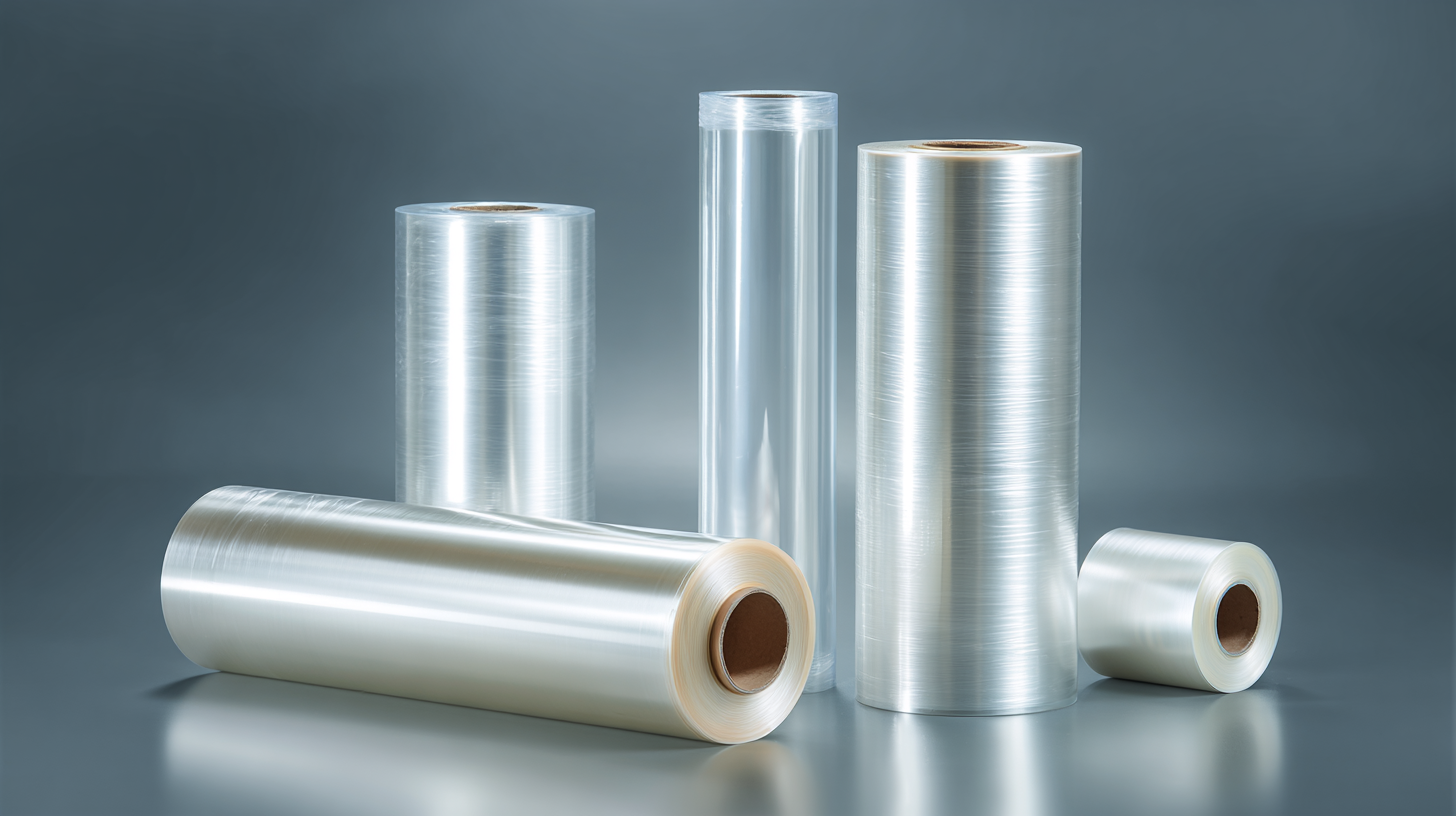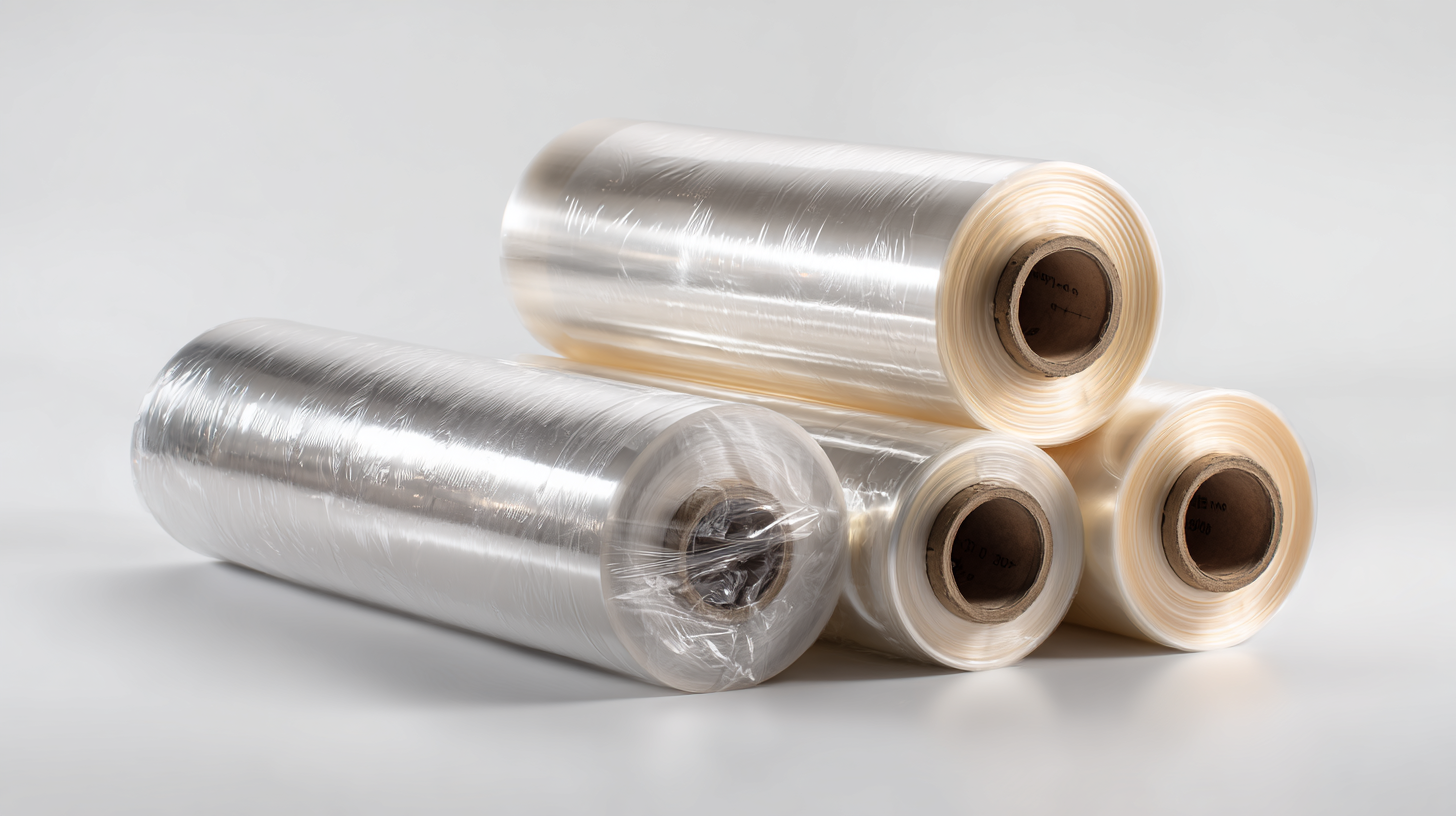As we look toward 2025, the packaging industry is undergoing significant transformations, with Stretch Film emerging as a vital component in enhancing supply chain efficiency and sustainability. According to a recent report by Smithers Pira, the global stretch film market is projected to reach $10 billion by 2025, driven by increasing demand in various sectors, including food and beverage, pharmaceuticals, and consumer goods.

Innovations in stretch film technologies, such as improvements in biodegradable materials and enhanced stretchability, are set to redefine packaging solutions and logistics. Selecting the right manufacturer for quality stretch film is crucial, as the efficacy of these products can significantly impact product safety and waste reduction. In this blog, we will explore the latest trends and advancements in stretch film, providing insights on how to choose reputable manufacturers and offering effective solutions that cater to diverse packaging needs.
The packaging industry is on the cusp of a revolutionary transformation, particularly in the realm of stretch film packaging. As we approach 2025, innovative materials are emerging that promise to enhance performance, sustainability, and usability. One of the leading trends is the development of bio-based stretch films, which are derived from renewable resources. These materials not only reduce dependence on fossil fuels but also offer the same protective qualities that traditional stretch films provide, making them an appealing option for eco-conscious businesses.
Another significant advancement is in the area of multi-layered films that combine various polymers to create a stronger, more durable product. These films are designed to resist punctures and tears while maintaining their stretchability, thus increasing efficiency during packaging processes. Additionally, the introduction of smart stretch films integrated with RFID technology allows for real-time tracking and inventory management, adding another layer of functionality to packaging solutions. These innovations are set to redefine standards in the industry, paving the way for more efficient, sustainable, and technologically advanced packaging solutions by 2025.

 As the packaging industry gears up for 2025, sustainability remains at the forefront of innovations in stretch film production. With a global shift towards reducing environmental impact, the focus is on developing high-barrier packaging solutions that not only enhance product shelf life but also minimize ecological footprints. As the market for recycled HDPE is projected to grow significantly, brands are under pressure to adopt sustainable practices that reflect consumer preferences and regulatory demands.
As the packaging industry gears up for 2025, sustainability remains at the forefront of innovations in stretch film production. With a global shift towards reducing environmental impact, the focus is on developing high-barrier packaging solutions that not only enhance product shelf life but also minimize ecological footprints. As the market for recycled HDPE is projected to grow significantly, brands are under pressure to adopt sustainable practices that reflect consumer preferences and regulatory demands.
One of the key trends in stretch film is the shift to lightweight materials that still provide high-performance protection. These innovations are driven by advancements in technology that allow for greater efficiency without sacrificing quality. Manufacturers are increasingly exploring biodegradable options that offer similar functionalities to traditional films while being less harmful to the planet.
Tips: When considering sustainable packaging options, look for products made from recycled materials or those that can be easily recycled after use. Additionally, stay informed about emerging technologies in the packaging sector that prioritize sustainability and performance. Engaging with suppliers who are committed to sustainable practices can also enhance the overall ecological responsibility of your packaging strategy.
As we venture deeper into 2025, the landscape of packaging solutions is significantly influenced by regulatory changes that impact the import and export of various materials, including stretch films. Governments around the globe are tightening environmental regulations, requiring manufacturers to adapt their packaging solutions to comply with new sustainability standards. This trend is not just a challenge; it is also a catalyst for innovation. Companies are exploring environmentally friendly alternatives to traditional plastic stretch films, such as biodegradable and recyclable options, which align with both regulatory demands and consumer preferences for sustainable products.
Furthermore, compliance with international trade agreements is becoming increasingly critical. The introduction of tariffs, trade restrictions, and compliance certifications adds layers of complexity for companies involved in cross-border packaging. As businesses navigate these changes, there is a growing emphasis on transparency and traceability in the supply chain. Companies that can quickly adapt to these new regulatory landscapes will not only safeguard their operations but also enhance their competitive edge. The future of packaging, particularly in the realm of stretch films, is poised for transformation as businesses strive to meet both regulatory requirements and the evolving expectations of eco-conscious consumers.
As we move towards 2025, the packaging industry is undergoing significant transformations, particularly in the realm of stretch film utilization across various sectors. Recent reports highlight that the global stretch film market is projected to reach USD 12.2 billion by 2026, growing at a CAGR of 5.1% from 2021. This growth trajectory is largely fueled by the rising demand for efficient packaging solutions that enhance product safety, reduce waste, and improve supply chain efficiency.
In industries such as food and beverage, pharmaceuticals, and e-commerce, advanced applications of stretch film are becoming increasingly prominent. For instance, with the adoption of biodegradable and recyclable materials, companies are aligning their packaging strategies with sustainability goals. Furthermore, innovations like machine-stretch film technology are revolutionizing pallet wrapping processes, significantly minimizing the amount of film required and thus lowering costs while maintaining structural integrity. A recent study indicates that these innovations can reduce film consumption by up to 30%, showcasing how industry players are harnessing technology to enhance performance while mitigating environmental impact.
Choosing the right stretch film for your packaging needs is essential for ensuring product safety and efficiency. With numerous options available, it is important to consider factors such as film strength, elasticity, and thickness. Begin by assessing the nature of the products you'll be wrapping; heavier items may require a stronger film, while lighter goods can benefit from more elastic variants. Additionally, understanding the environmental impact of your choices is crucial. Many companies are now offering eco-friendly options that not only mitigate waste but also enhance your brand’s image.
Next, consider the application method. Hand wrapping is often ideal for smaller operations, whereas machine wrapping is more efficient for larger volumes. Evaluate your equipment compatibility with stretch films to ensure optimal performance. It's also wise to consult supplier recommendations based on your specific operational needs, as they can provide guidance on the best innovations and trends. By taking these steps, you can select a stretch film that aligns perfectly with your packaging goals and enhances your overall efficiency in 2025 and beyond.
